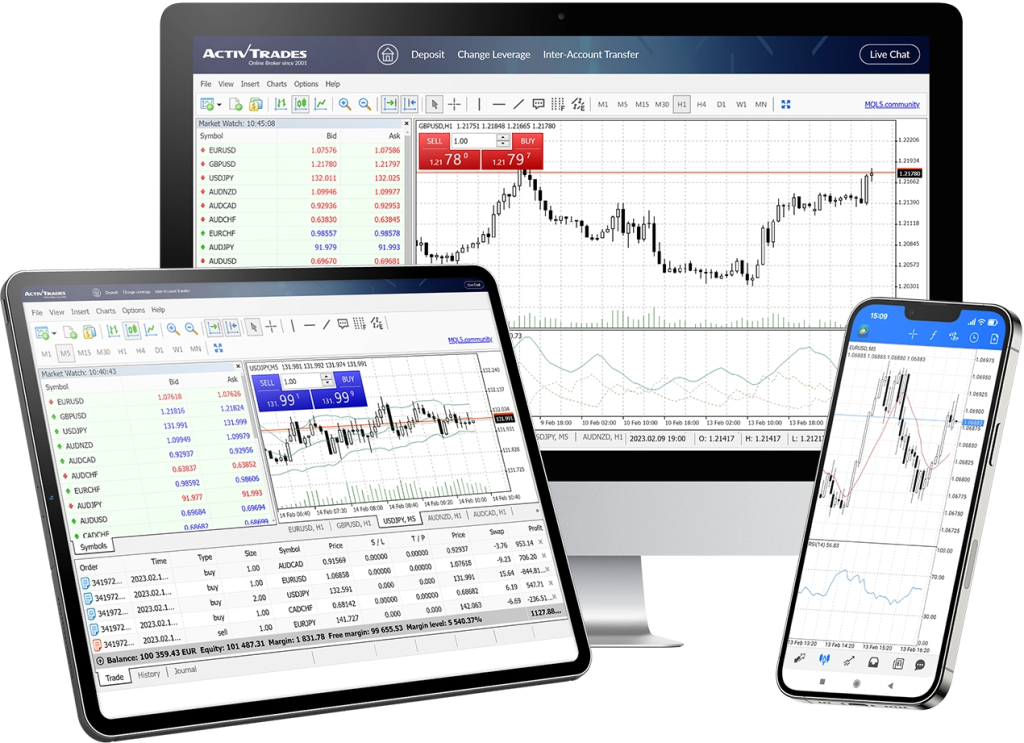Trade ETFs with any size of account
No hidden fees for opening or closing trades
ETF CFDs allow for both long and short positions
All client deposits are insured and held in segregated accounts
With customer satisfaction rate over 95%
Your profits are instantly available to you at all times

Trade forex on our exclusive next generation trading platform


| EURUSD | GBPUSD |
| USDJPY | and more |

| EURUSD | GBPUSD |
| USDJPY | and more |

| EURUSD | GBPUSD |
| USDJPY | and more |

| EURUSD | GBPUSD |
| USDJPY | and more |

| EURUSD | GBPUSD |
| USDJPY | and more |

| EURUSD | GBPUSD |
| USDJPY | and more |

| EURUSD | GBPUSD |
| USDJPY | and more |
The prevailing interest rates at the time of investment are a key driver of bond prices and yields. Keep in mind that bond issuers are always competing with the yields offered in the broader economy.
This dynamic becomes more complicated when interest rates change. Say you invested in a bond that yields 2%, but halfway to its maturity the interest rate offered by the banking system rose from 1.5% to 2%.
The issuer of the bond you purchased must now compete with the interest rate offered by the banking sector and so will issue new bonds with a higher yield. This puts the holders of the first 2% yielding bond at a disadvantage as they effectively paid the same for less yield. The only way to redress this imbalance, since the coupon is fixed, is for that first bond to drop in price until its price to yield is the same as the newer, higher-yielding bond.
The same occurs in the case of interest rates falling over time. If wider interest rates fall, then newer bonds will be issued with a lower interest rate. Since coupons are fixed, the older bonds issued at the higher interest rate will have their price go up in order for the coupon payment on the older, higher-yielding bond to match the lower yield of the newer bonds.
Bonds are a type of debt-based security that’s issued by a government or a company, in order to finance its operations. In other words, a bond is a loan made by the investor, to the organisation issuing it.
This bond entitles the investor to an interest rate payment, known as a coupon, throughout the duration of the bond, as well as the ability to sell the bond on the open market to others whenever the investor in question chooses to do so. At the end of the term, also known as the bond’s maturity, the issuer of the bond must pay back the initial amount. Please note that when trading in CFDs, no coupon or interest payment is entitled to the investor.
The benefit of holding bonds in a portfolio is that they are considered much safer than stocks, but unlike holding cash, they benefit from the yield of the coupon payment. Longer-term bonds tend to have a higher coupon because of the opportunity cost of having your capital locked up, but, as we’ve seen above, this is also true when the issuer has a lower credit rating (i.e. it’s a riskier investment).
Bond yields and bond prices are inversely correlated. When the yield goes down, the price goes up. On the other hand, when the price goes down, the yield goes up. This may seem confusing at first glance, but it starts to make a lot more sense when you consider the supply and demand characteristics of bond investing.
Investors flock to bonds in uncertain times. This is because they tend to offer a higher yield than holding cash, and if the issuer has a high credit rating, they can be considered almost as safe as being in cash. But when there’s more demand than supply (i.e. everybody wants to invest in bonds), then the yield drops because the issuer has no trouble raising cash in such circumstances.
Conversely, when nobody wants to invest in bonds, perhaps because other areas of the market such as stocks are performing well and so look much more attractive, then the only way to attract capital to the bond market is to raise the yield to a level that becomes attractive to investors.
This is why, when bond yields are rising, the bond market is thought to be in trouble, and when bond yields are falling, the bond market is thought to be in good health. Of course, this can be taken to extremes.